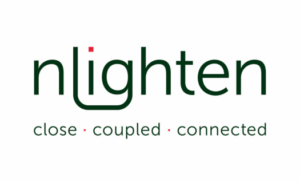We already know that in the world of digital marketing, audience segmentation and understanding are essential for success. In this regard, psychographic profiles have become an essential tool. We will explore what psychographic profiles are, how they can be applied in marketing, and the similarities they share with behavioural marketing.

What are Psychographic Profiles in Marketing?
Psychographic profiles go beyond demographics to analyze the psychological and behavioural aspects of consumers. These profiles are created by collecting data on beliefs, values, interests, lifestyles, and attitudes, providing a more comprehensive and accurate picture of the target audience.
Examples of Psychographic Profiles in Marketing
Eco-conscious vs. Traditional Consumers:
In the fashion sector, some consumers are highly focused on sustainability and ethics in clothing manufacturing. On the other hand, there are those who value traditional fashion and iconic brands. These psychographic profiles allow brands to tailor their messages and products to appeal to these two distinct groups.
Fashion brand Patagonia has focused on appealing to eco-conscious consumers. Its focus on sustainability, ethical production and promotion of an outdoor lifestyle has attracted an audience committed to protecting the environment. Their “Don’t Buy This Jacket” campaign is an example of how they have connected with consumers who value sustainability.
Tech Enthusiasts vs. Tech Conservatives:
Electronics companies can create psychographic profiles that differentiate those who seek the cutting edge of technology and are willing to try the latest innovations from those who prefer proven and reliable technology. This influences marketing strategies and product development.
Apple and Samsung are two examples of how brands can target these psychographic profiles differently. Apple focuses on innovation and early technology adoption, attracting tech enthusiasts. Meanwhile, Samsung appeals to more conservative consumers, highlighting the reliability and durability of its products.
Health Enthusiasts vs. Food Lovers:
Companies in the food industry can divide consumers into two groups. One group may consist of health-conscious individuals seeking healthy options, while the other group may be composed of food lovers seeking delightful culinary experiences. This helps tailor messages and products to meet these specific needs.
The Subway restaurant chain has used psychographics to attract health-conscious consumers. They have highlighted their “healthy fast food” option through advertising that promotes fresh ingredients and meal customization, appealing to those seeking healthier choices.
Adventure Travelers vs. Relaxation Travelers:
Travel agencies can create psychographic profiles based on the types of experiences travelers seek. Some are interested in thrilling adventures like hiking and skydiving, while others prefer relaxing beach getaways. Segmentation helps design suitable travel packages and promotions for each group.
The adventure travel company REI Adventures targets adventure travelers by offering hiking, climbing, and other exciting excursion packages. In contrast, resorts like Sandals and Beaches cater to relaxation travelers, promoting beach destinations and luxury experiences.
Culture Enthusiasts vs. Sports Fans:
In the entertainment industry, psychographic profiles can differentiate those interested in cultural events like theatre and museums from sports enthusiasts who prefer live sports events. This influences event promotion and strategic partnerships.
The National Geographic Society targets culture and knowledge enthusiasts by offering magazines, documentaries, and adventure trips focused on exploration and education. On the other hand, sports brands like Nike focus on sports enthusiasts, using famous athletes and empowerment sports campaigns.
First-time Moms vs. Independent Professionals:
Brands selling products and services for parents can create psychographic profiles based on the needs of first-time moms seeking advice and support versus independent professional moms looking for practical and efficient solutions. This affects content creation and marketing strategy.
The baby product brand BabyBjörn targets first-time moms looking for safe and user-friendly products for their babies. In contrast, brands like IKEA target independent professional parents, offering practical furniture and design solutions for modern families.
How to Use Psychographic Profiles in Marketing
Research and Analysis: Collect data on your current customers and use surveys and social media analysis to understand their values, interests, and behaviours.
Advanced Segmentation: Divide your audience into groups based on the identified psychographic profiles. This allows you to create specific strategies for each segment.
Relevant Content: Create content that resonates with each psychographic profile. Use language, images, and messages that connect with the motivations and values of each group.
Personalisation: Use information from psychographic profiles to personalise your marketing campaigns and messages. This will increase the relevance and effectiveness of your efforts.
Similarities with Behavioural Marketing
While psychographic profiles and behavioural marketing have different approaches, they share some key similarities:
Focus on Behaviour:
Both psychographic profiles and behavioural marketing aim to understand and predict consumer behaviour. While the former focuses on underlying motivations, behavioural marketing looks at past responses and actions.
Personalisation:
Both approaches aim to personalise interactions with consumers. Psychographic profiles do this by adapting content to psychological characteristics, while behavioural marketing personalises based on a user’s previous behaviour.
Enhancing Relevance:
Both psychography and behavioural marketing seek to increase the relevance of communications with consumers. By better understanding the audience, more precise messages can be delivered.
Psychographic profiles are a valuable tool in the arsenal of digital marketing. By combining an understanding of consumer psychology with message personalisation, brands can connect more effectively with their audience and enhance the effectiveness of their strategies. Like behavioural marketing, this methodology is about adapting and responding to the changing needs and desires of consumers in the competitive digital world.












